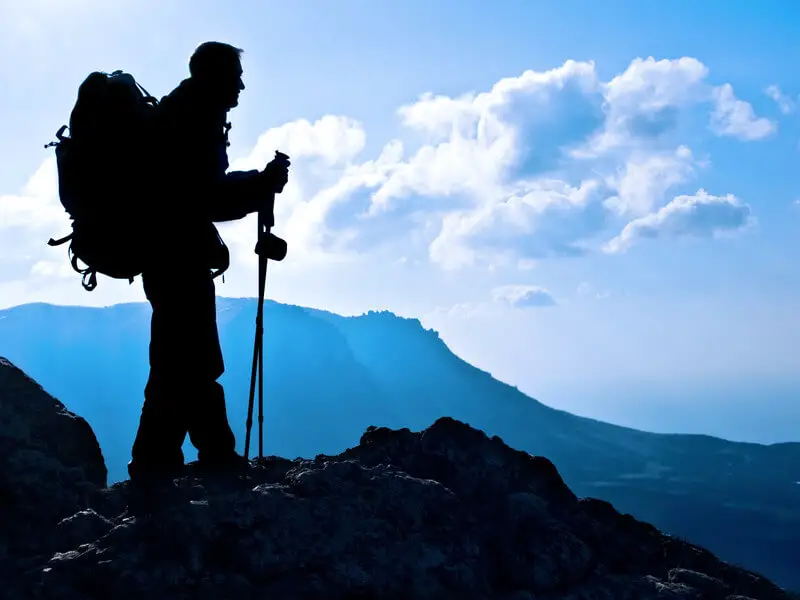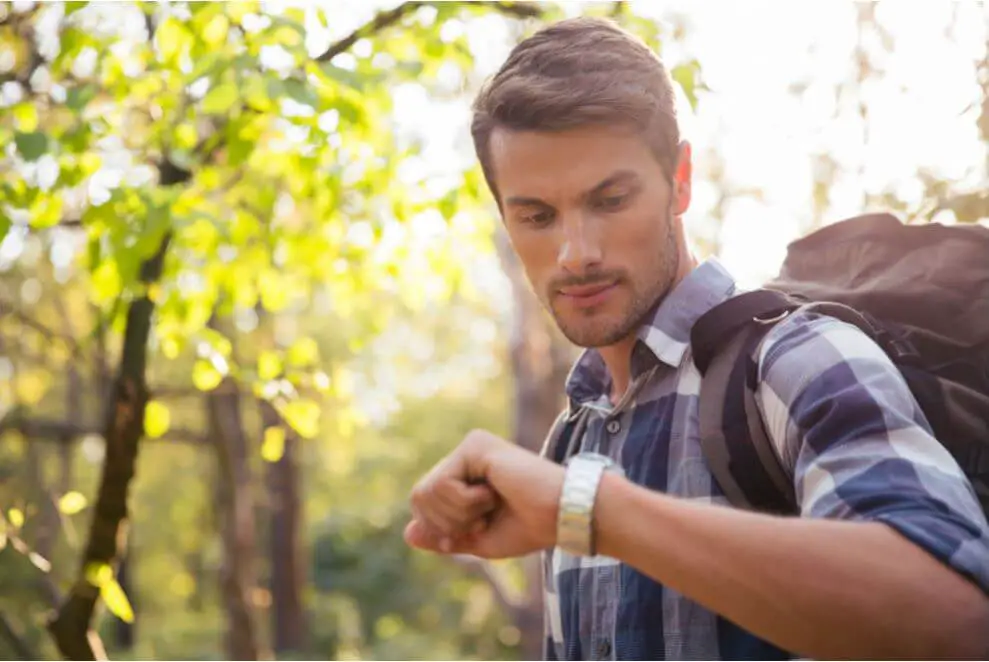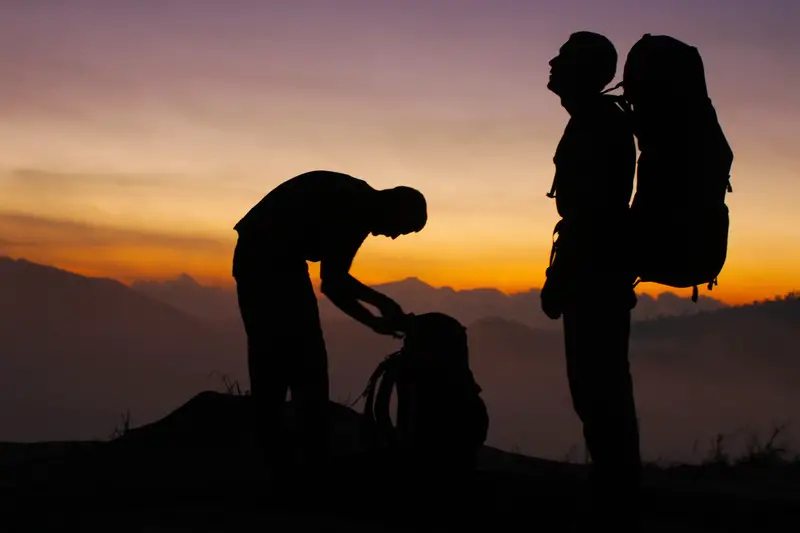Knowing your average hiking time can be useful in a number of situations, especially when it comes down to figuring out how long a hike will actually take you to complete.

If you would like to find out what your personal average hiking speed is, read on to learn how you can calculate your hiking time per mile and how you might put this information to good use.
Why it’s Useful to Know Your Hiking Speed
If you enjoy hiking to destress and relax, you may not be that interested in knowing your hiking speed. However, at some point, you’re going to wonder what time you’ll need to leave by to make it back before nightfall, or where you should aim to stop over on an extended hiking trip.
As much as you might want to keep your hikes spontaneous and natural, at some point if you want try out new places and trails, you’re going to have to do some minor, organizational planning.
When you’re planning on hiking as part of a group, it can be useful to agree on a common hiking speed before committing.
If the group is newly formed or a one-off trip, it can be useful to know what range of speeds members generally hike at to reach a consensus before starting as well, so as to plan breaks as well as departure and arrival times.
Your hiking speed can also be good to know if you are looking to improve your physical condition and intend to use hiking as part of your training plan.
Knowing your current hiking speed and aiming for a faster one, can help you to get into better shape. Of course if you are aiming to step things up a gear and take on a thru-hike or start fastpacking, then you will naturally be interested in knowing your current hiking speed and how you can improve it.
How to Calculate Your Average Hiking Speed
To start with, you should bear in mind that the average walking pace is around three miles per hour (approx. five km/h). Of course, many people will walk faster and many others much slower.

However, when you’re hiking, it’s not quite the same as going for a walk around the block. There are plenty of other considerations to take into account which will ultimately affect your hiking speed.
Here’s some of the main factors you will need to consider when calculating your average hiking speed.
Terrain
Obviously, your pace will be faster on flat, easy-going terrain than it will be on steep inclines with uneven footing. If you’re planning on hill walking, you could use Naismith’s Rule as a guide to help you to account for uphill sections.
Basically you allow one hour for every three miles forward and add another hour for every 2,000 feet (600m) you ascend.
This improved figure can be useful, however, you need to remember that certain sections of trail can be more difficult and time consuming than others, regardless of the incline and that descents can often take longer than ascents.
So, by all means use Naismith’s Rule to help, but don’t forget to also factor in any other possible terrain-related factors, such as overgrown vegetation, rocky ground, or tricky descents.
It’s also worth noting that Naismith’s rule is generous, and any reasonably fit and regular group of hikers, will likely go faster then it.
Load
A short day hike in ideal conditions shouldn’t require you to carry a load that will slow you down too much. However, even long day hikes with average loads can slow you down a little, not to mention when you’re on a backpacking trip carrying a full 60L backpack.

You’ll need to take your pack weight and bulk into consideration when you’re working out how long a particular trip is going to take you.
Weather
The weather can hugely influence your hiking speed. Unexpected winds, heat, storms, low visibility can all bring even the fastest of hikers down to a crawling speed.
Even once you’ve factored in slowing down for weather conditions, you will also have to possibly reconsider your pack weight again, and how that might slow you down further.
For example extra water for a heatwave, extra layers in a cold spell and various tools such as pick axes in extreme winter weather conditions.
Company
In general, unless you’re training together and challenging each other, hiking in company tends to be slower than hiking solo. Social interactions on the go will undoubtedly slow down your average hiking speed.
Nothing wrong with that, and chatting on the trail is part of the fun too, but it’s something to keep in mind when planning how long you will be out, especially if you are leading a group.
Physical Condition
If you’re in good shape and keep active regularly then your hiking speed is likely to be higher over some difficult parts than it would be for someone out of shape, even if your natural walking speed is on the slow side.
As your body will be more used to exercise, you’ll need less time to stop and recover after tricky sections, and you should get into your stride faster and be able to keep going at a comfortable pace for longer.
Experience
Unless you have plenty of hiking experience, you won’t be able to factor it in for it! Knowing your average speed and where your strengths and weaknesses are, how well you take ascents and descents, how to deal with any navigation issues or any other problems that may occur out on the trail.
All of your experience out hiking combined with knowledge of your own endurance, will give you the best estimate you can get for how long a certain trail will take you.
If you regularly work out your average speed, you will reach a certain point where you become aware of how fast or slow you’re traveling and can adapt your speed to suit your needs. Using a smartphone and an app to track your hikes will give you extremely accurate figures.
While your hiking speed will vary with the factors listed here, it can be useful to look at your speeds over the course of your hike and to gain valuable insight, enabling you to predict your speed over certain sections of future hikes based on past performance.
Conclusion – Putting it all together
If you would like to work out your average hiking time per mile, take the average figure of three miles per hour into consideration. If you know you walk particularly fast or slow, allow for this.
Then factor in the terrain using Naismith’s Rule for any ascents, bearing in mind the descents can sometimes be just as slow, or even slower when its steep, too. Allow for your load, weather and any difficult terrain and you should come up with an approximate figure that’s a useful guide.
With modern technology, you can easily use an app on your smartphone to figure out not only your average performance, but also where, when and why you were at your slowest. This can be invaluable to know and really provide a useful guide when you’re putting together an itinerary for a new hiking trip.
We hope you found this useful, please share it around your networks if you did 🙂
Happy hiking and stay safe on the trail!